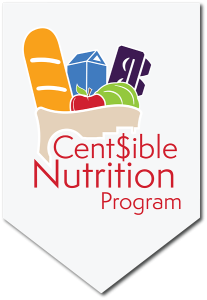Beans, beans, they are good for you and good for your garden too! Beans are packed with nutrients, like protein, fiber, and vitamin C, all of which are important for your health. In the garden, beans help fix nitrogen into the soil, which is good for the garden’s health.
There are many types of beans. Dry beans are harvested for their seeds, while green, snap, and string beans can be eaten shell and all. Today, we’re focused on green, snap, and string beans.
In the garden, there are two main types of beans: bush or pole varieties. Bush varieties are ready to harvest sooner than pole beans, require little space, and can grow up to 2-3 feet high, making them the more popular choice. Pole beans need to be able to climb something, like a pole, fence, or trellis for support as they grow. They can range in height from 10-15 feet tall and take longer until they are ready for harvest.
Planting
- Plant beans after the last hard frost in the spring, which is usually in June in Wyoming.
- Stagger plantings, 2-3 weeks apart, up until July 1.
- Plant bush bean seeds in rows 24-30 inches apart. Keep seeds 2 inches apart in the row and plant 1-1.5 inches deep.
- Plant pole beans in rows 40-60 inches apart.
- Water regularly, especially when the flowers are blooming and the pods are forming.
Harvesting
- Bush beans are usually ready to harvest 50-60 days after planting.
- Pole beans are usually ready to harvest 65 days after planting.
- Due to their shallow roots, be careful when weeding and working around the beans.
- Healthy plants will continue to produce beans for several weeks, if picked regularly.
Suggested Varieties:
Bush: Bush Blue Lake 274, Early Contender, Kentucky Wonder, Tenderpick, TopCrop, Mascotte, Derby.
Pole: Kentucky Blue, Kentucky Wonder, Scarlet Runner, Seychelles, White Half Runner.
Happy gardening!
Information summarized from UW Extension publications by Katie Shockley, Writer/Editor, University of Wyoming Extension Communications & Technology.
Beans, beans, they are good for you and good for your garden too! Beans are packed with nutrients, like protein, fiber, and vitamin C, all of which are important for your health. In the garden, beans help fix nitrogen into the soil, which is good for the garden’s health.
There are many types of beans. Dry beans are harvested for their seeds, while green, snap, and string beans can be eaten shell and all. Today, we’re focused on green, snap, and string beans.
In the garden, there are two main types of beans: bush or pole varieties. Bush varieties are ready to harvest sooner than pole beans, require little space, and can grow up to 2-3 feet high, making them the more popular choice. Pole beans need to be able to climb something, like a pole, fence, or trellis for support as they grow. They can range in height from 10-15 feet tall and take longer until they are ready for harvest.
Planting
- Plant beans after the last hard frost in the spring, which is usually in June in Wyoming.
- Stagger plantings, 2-3 weeks apart, up until July 1.
- Plant bush bean seeds in rows 24-30 inches apart. Keep seeds 2 inches apart in the row and plant 1-1.5 inches deep.
- Plant pole beans in rows 40-60 inches apart.
- Water regularly, especially when the flowers are blooming and the pods are forming.
Harvesting
- Bush beans are usually ready to harvest 50-60 days after planting.
- Pole beans are usually ready to harvest 65 days after planting.
- Due to their shallow roots, be careful when weeding and working around the beans.
- Healthy plants will continue to produce beans for several weeks, if picked regularly.
Suggested Varieties:
Bush: Bush Blue Lake 274, Early Contender, Kentucky Wonder, Tenderpick, TopCrop, Mascotte, Derby.
Pole: Kentucky Blue, Kentucky Wonder, Scarlet Runner, Seychelles, White Half Runner.
Happy gardening!
Information summarized from UW Extension publications by Katie Shockley, Writer/Editor, University of Wyoming Extension Communications & Technology.
Additional Resources
Learn more about growing green beans with these resources from the University of Wyoming Extension:
- UWE Publication: Growing: Vegetables in Wyoming
- UWE Publication: Whether bush or pole, green beans weather Wyoming
- Video: Garden Beans
Next up: Preserving Your Harvest [Coming the week of September 14]


